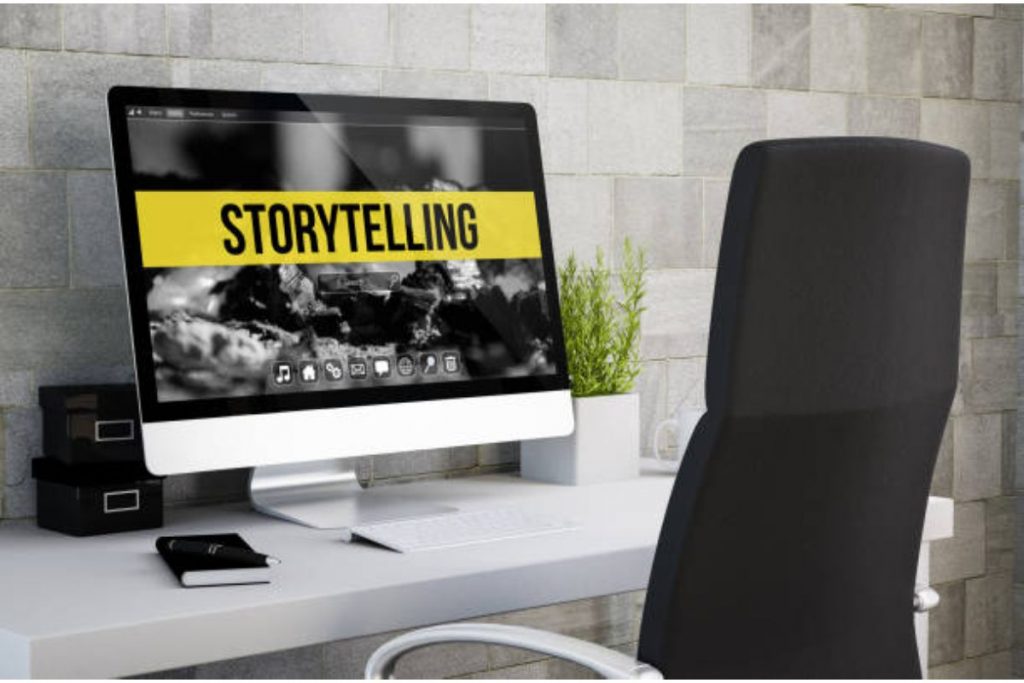Table of Contents
Visual storytelling vs. digital storytelling: How they compare
There’s sometimes a little confusion between visual storytelling and digital storytelling. This is understandable, as they have similarities and there are many crossovers between the two. Visual storytelling is defined as a story that is told using visual means, such as drawings, photographs, or video.
By comparison, digital storytelling can be defined as a story that is told using digital media, including video, music and other audio, photos, and 3D content. Visual storytelling is at its best when done with digital media, and so there is frequent confusion between the two forms. Almost all digital storytelling uses some form of digital visual media supported by other media elements, but not all visual storytelling is done digitally.
Advantages of digital storytelling
Digital storytelling has clear advantages over analog visual storytelling, and these translate to bankable benefits when applied in a business setting. The first of these is the ability to adjust digital stories in real-time. This is not applicable to every situation, and it relies on the ability of the digital storytelling software, however it means you can adapt to your audience and adjust your stories accordingly by choosing specific story elements or media.
As well as adjusting your digital storytelling experience as you go, digital stories have the special quality of being able to customize them in advance. This customization enables precise targeting of specific customer groups and more resonant stories that really hit home. Both of these two benefits come from using the non-linear storytelling capabilities of your digital storytelling software. Not all software solutions have this function, but it enables the storyteller to deploy digital media assets in whatever order makes sense at the time. This relies on a modular structure, which gives the most flexibility for different applications.
Take your customers on an immersive experience they won’t forget
Digital stories can be much more interactive than the presentations, sales pitches, or marketing events that they replace. Using the capability of your digital storytelling software to deploy non-linear stories, you can take cues from the audience about where the story should go next. This becomes much more engaging for the participants, who have a role in steering the direction of the narrative based on what interests them.
To really grab attention, bring your customers to the perfect venue for digital storytelling: an immersive experience.
By using an immersive experience, you put the customer at the center of the action. They surrounded by an entire world that you have crafted to meet their needs and interests, that reflects your branding, and that can take the customer on the journey they want to take. These immersive experiences are not just an attention-grabbing stunt – they form strong memories that closely approximate real experiences in our minds. They also help to form a multi-sensory approach to understanding difficult fundamental concepts and abstract ideas.
Digital storytelling software powers the experience
Behind the best digital storytelling and immersive experiences is the engine that makes it work: your digital storytelling software.
These vary a great deal in form and function, and there are very few options for professional storytelling in a corporate context. The most capable and comprehensive tool is the Hyro platform, which offers a cloud-based storytelling platform that used with any screen and multiple screens at the same time. There is no restriction on the specific setups used with, and it can handle practically every file type and format you could ever expect to encounter. Hyro is fully capable of handling 3D content, and used on 360-degree screens and immersive experiences.
Using powerful software like Hyro enables businesses to use the power of storytelling for every department, ensuring that the value extracted by every part of the company.
Sales – Creating amazing sales presentations that blend digital storytelling, statistics and media elements that drive the message home and make benefits crystal clear.
Account Management – Give your clients the personal treatment they deserve with fully-customized performance updates, projections, and reviews of their situation.
Marketing – Use the power of digital stories to boost engagement in webinars, host hybrid events, execute digital inspirational sessions and add interest to physical events with digital signage or large screens. Take it up a notch, and use an immersive experience to create brand awareness and interactive experiences that gather valuable information.
Partnerships – Collaboration can be even better when immersive technologies used to keep people involved and on-task. Visualize the possibilities and the outcomes.
HR – Use digital stories that tell your employer brand story, recruit and train new talent with immersive training experiences that fast-track experiential learning.
These are just a few of the ways Hyro can help each department wield the power of digital storytelling. There are many more ways that you can use interactive and immersive storytelling to reach people’s hearts and convince their minds. However, what truly gives digital storytelling value is the ability to customize, adapt and interact – and this depends entirely on the software used to power the experience. Contact purple.global if you want to learn more about this.

